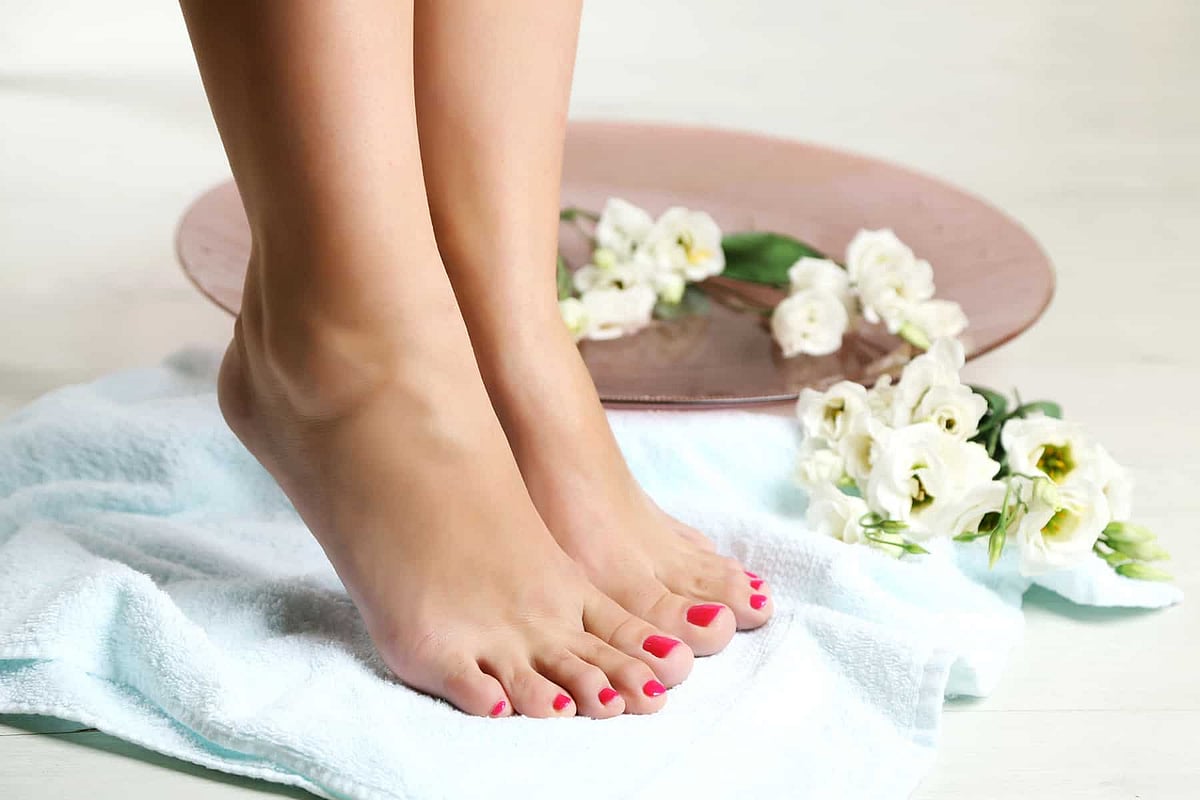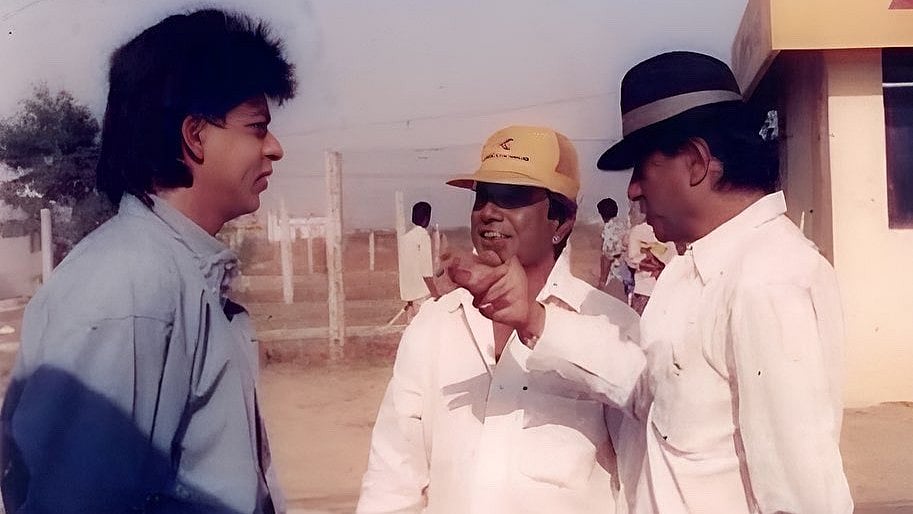For so many weeks, I have spoken how you can solve practically any health issue by actuating points on the hand and feet. Happy healthy feet are a sign of a healthy body. No wonder that we all love a good foot massage. It makes you feel so good, isn’t it? However, what would one do when the feet itself run into a problem?
We all know that the feet take a lot of daily abuse. Be it walking, running, jumping, and climbing, they are subject to many different types of problems - injuries to inflammation, several different types of damage and malfunctions can lead to foot problems.
Did you know that each foot is made of up 26 bones, making it one of the most intricate area of the body? It is estimated a person will walk an estimated 150,000 miles in their lifetime, roughly the equivalent of walking around the world six times. However, improper footwear, diabetes, and aging are some of the chief contributors to foot problems. This article will highlight some of the most common foot concerns, their causes, and when to seek treatment.
1. Athlete’s foot: A highly contagious fungal infection, most commonly caused by walking in damp areas like the gym, shower, or pool decks where people walk around barefoot. Fungus tends to thrive in warm, damp areas. Wearing shoes that are tight, closed, warm and damp can also cause the fungus to grow and spread. Being contagious, it can spread to other areas of the skin, including the hands, groin, and scalp. Athlete’s foot causes itching, cracking, blistering, and peeling of the feet.
The condition usually starts between the fourth and fifth toes, then spreads. A person can also develop cracks in the heels or skin of the toes. If infected, a person should keep their feet clean and use a separate towel. Antifungal treatments are available at most medical stores in the form of sprays, powders, or lotions to apply to the feet.
Symptoms: Redness, swelling, scaling cracking, burning and intense itching between the toes. The skin may look white and puckered.
Treatment: Probe points GB 43, UB 60, K1 ↓ all. Stimulate the points. Paste methi seeds on these points (see figures).
2. Bunions: These are abnormalities of the feet that cause a bump to develop on the large toe joint and can cause the big toe to turn slightly inward. Women are more likely to have bunions due to increased pressures from narrow footwear. Tight shoes put pressure on a joint where the bone of the foot meets the bone of the big toe. Having a family history of bunions is also a risk factor. Additionally, some conditions, including rheumatoid arthritis or polio, increase the likelihood of developing a bunion.
Symptoms: Visible bump on the side of the foot, tenderness on or around the big toe, callus or corn on the bone below the big toe, difficulty moving the big toe, pain in the big toe when walking.
Treatment: Probe points, Liv 2, Sp 2, 3 ↓ all (see figures).
Hallux Valgus: It is an abnormally positioned big toe in which the joint at the base of the toe bulges outward from the inner side of the foot and the big toe points toward the smaller toes. Sedate the following pressure points, Liv 2, 3, Sp 2, 3, Li 4 ↓, all (see figures).
3. Diabetic neuropathy: This is perhaps the most serious of all problems as it goes undetected. People with diabetes are more prone to fluctuations in blood sugar. Diabetic neuropathy is not one condition, but a group of conditions that cause damage to the feet due to diabetes. Over time, high blood sugar levels can damage the nerves, especially those in the feet. Other factors can make this nerve damage worse, such as a history of smoking, alcoholism, or history of diabetic neuropathy in the family.
Symptoms of diabetic neuropathy include numbness, tingling, and pain in the feet. This can contribute to a greater risk of a person experiencing cuts or injuries to the feet due to lack of feeling. Maintaining good health and blood sugar control can help a person treat their diabetic neuropathy. While a doctor cannot reverse nerve damage, they can recommend treatments to prevent it worsening. A person with diabetes should also go for regular foot exams. They may wish to have their toenails professionally trimmed and seek medical attention if they identify any foot wounds.
Detailed treatment for diabetes metabolism has been given in the earlier article on diabetes. Sedate meridian point Pn 3, on right foot bone below the big toe as shown in the figure below.
3. Plantar fasciitis: It’s the most common cause of heel pain, a condition that occurs when the plantar fascia on the bottom of the foot becomes inflamed. This ligament is responsible for supporting the foot’s arch. Risk factors include being obese, having a very high arch, having tight calf muscles, and participating in activities that repetitively stress the heel, such as running.
Plantar fasciitis causes a person to experience pain on the bottom of the heel. This pain is usually worse first thing in the morning when getting out of bed. The pain also worsens with activity. Most people can manage plantar fasciitis with at-home treatment. Resting the foot and applying ice can reduce inflammation.
Treatment: Stretching the calf muscles often accelerates healing. Sedate meridian points UB 60, 62, K1, 3, 5, Sp 3, 4, Liv 3. Or Liv 3, Sp 3, GB 34, Webs -- four points (see figures).
5. Corns: Corns are patches of thickened skin, often found on the soles of the feet or toes. They are normally painless to start with. These areas form to protect the skin and stop the body from developing blisters. Corns can be caused by bunions, hammer toe, or ill-fitting shoes. Over time, they may become painful and should be treated as soon as possible. Corn plasters are available over the counter (OTC); they relieve pressure on the corn and allow it time to heal. In some cases, a doctor may recommend surgical removal.
Treatment: Sedate meridian points Liv 3, Sp 3, GB 34, Webs (see figures).
6. High Arch Foot or Pes Cavus: In a normal foot, the gait cycle (walking) begins with the arch in a flattened position, allowing the foot to be loose enough to adapt to the terrain. When the leg is perpendicular to the ground, the arch begins to rise to allow the foot to lock and support the weight of the body as it is propelled forward. In individuals with a flat foot (pes planus), the foot stays loose and unlocked.
In those with a high arch (pes cavus), the arch does not flatten, and the foot stays locked — the foot is not flexible and thus pounds the ground as the person walks. Neurologic conditions, such as cerebral palsy and Charcot-Marie-Tooth (CMT), can result in a structurally high arched foot
Treatment: Sedate meridian points UB 60, 62, K 1, 3, 5, Sp 3, 4, Liv 3 (see figures).
7. Flat Foot or Pes Planus: The opposite of a high arched foot is a flat foot, which, due to its structure, is “loose.” Flat foot is among the most common structural deformities of the foot, in which the medial arch is collapsed or begins to collapse at some point. This deformity can be congenital or acquired if ligaments can no longer support the foot structure because they are injured (posterior tibial tendon dysfunctional or become mal-aligned later in life.
Treatment: K1, 3, 5, UB 56, 60, 62, Liv 3, Sp 3, 4, Sedate all (see figures).
8. Bruising: is a dark discoloration of skin occurring after an injury. Sharp bump or tears small blood vessels in deepest layer of the skin and allows blood to leak out and collect in the thin top layer of the skin and between cells and fibers in the dermis (deepest layer of skin). The body responds quickly, to contain the bleeding. The platelets form a semi solid plug that prevents more blood from escaping. Within few days, the bruise takes on a yellowish hue, as the escaped red blood cells are broken down by white blood cells. If the bruise does not fade within a week, this can be a sign of underlying bleeding disorder.
Treatment: Sedate meridian points GB 34, Li 4 and point around the area of bruise (see figures).
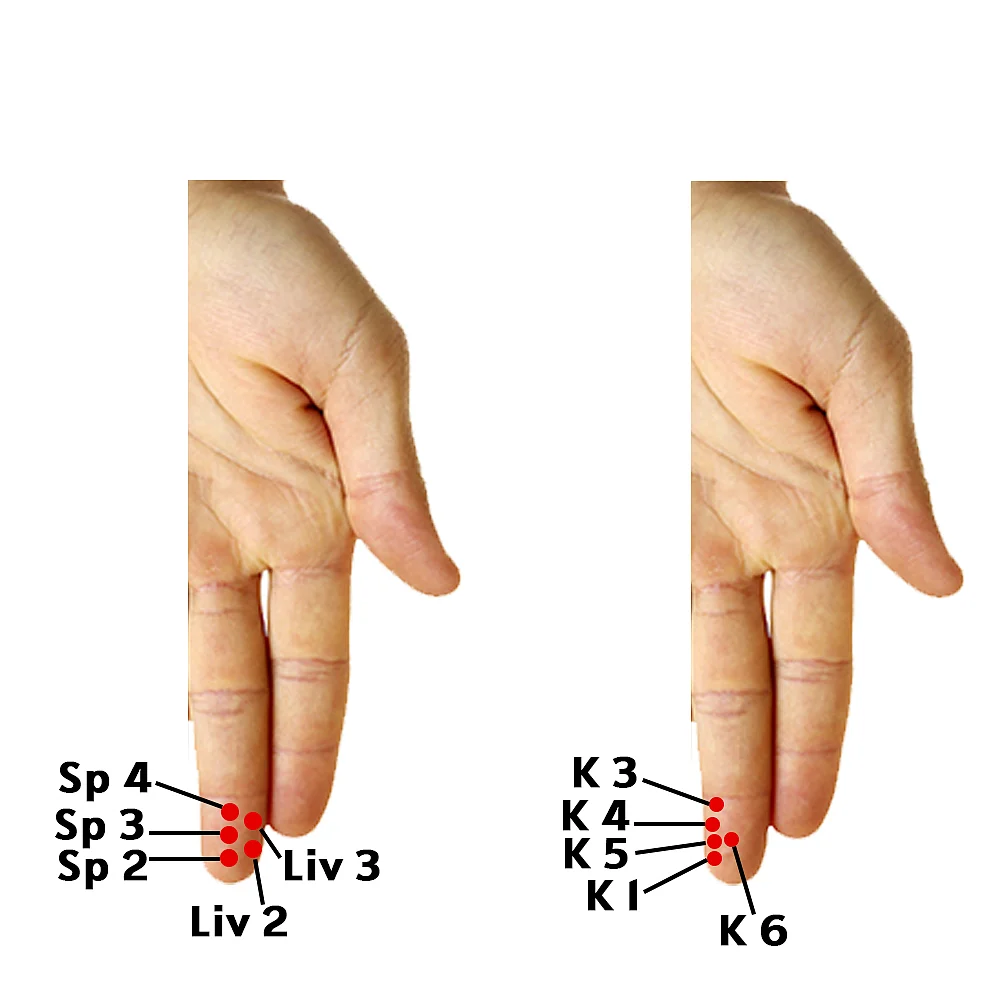

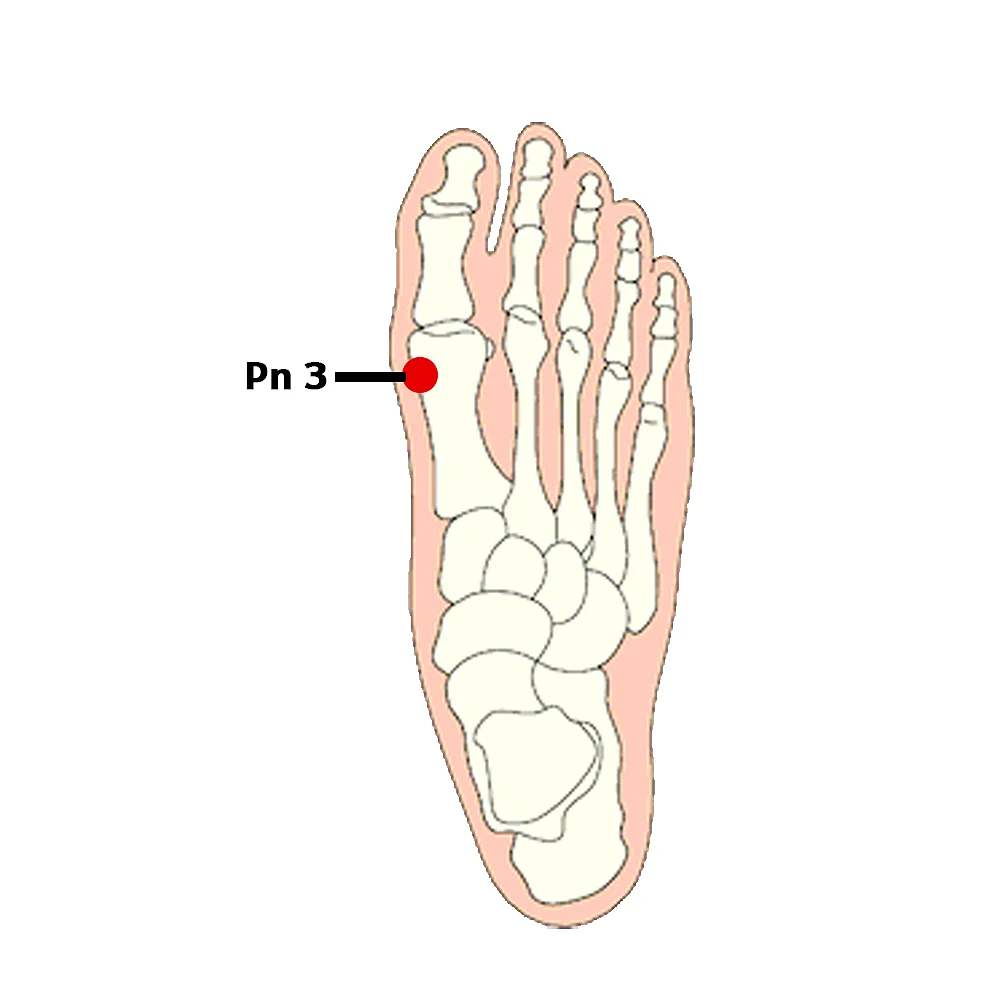
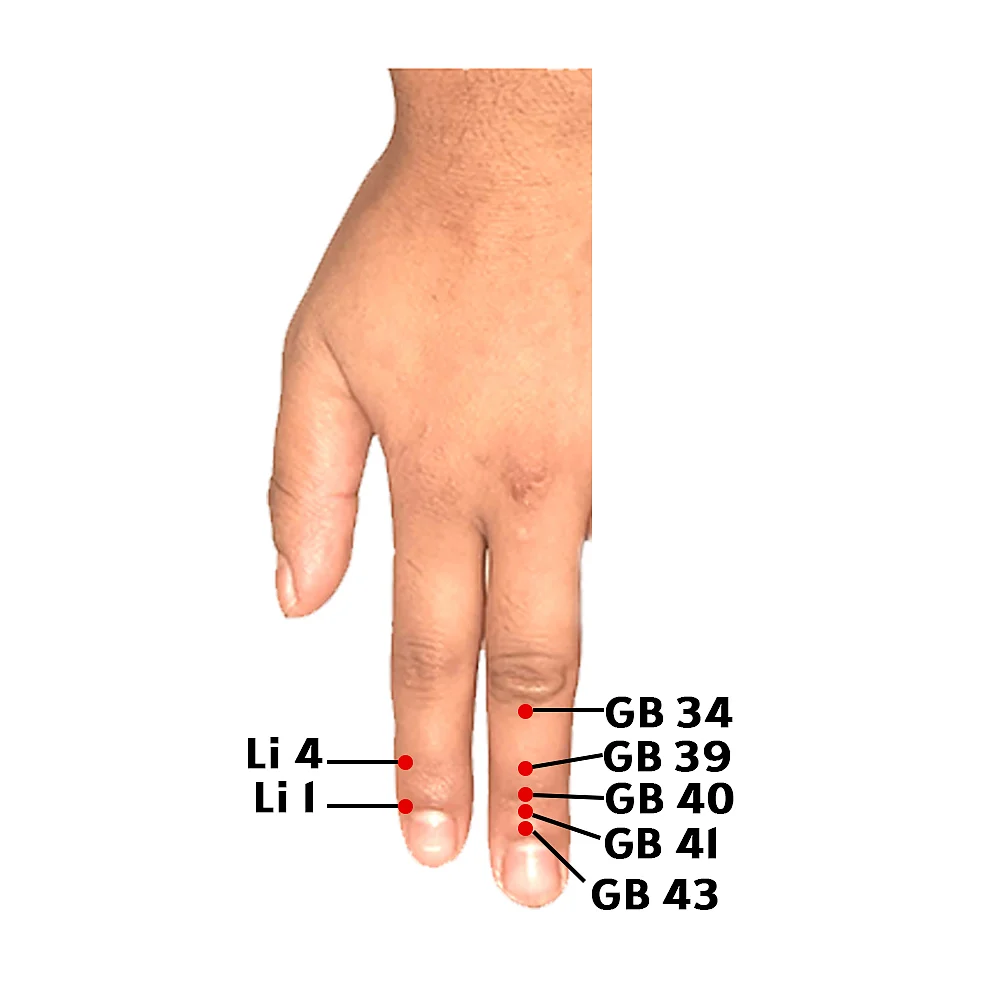
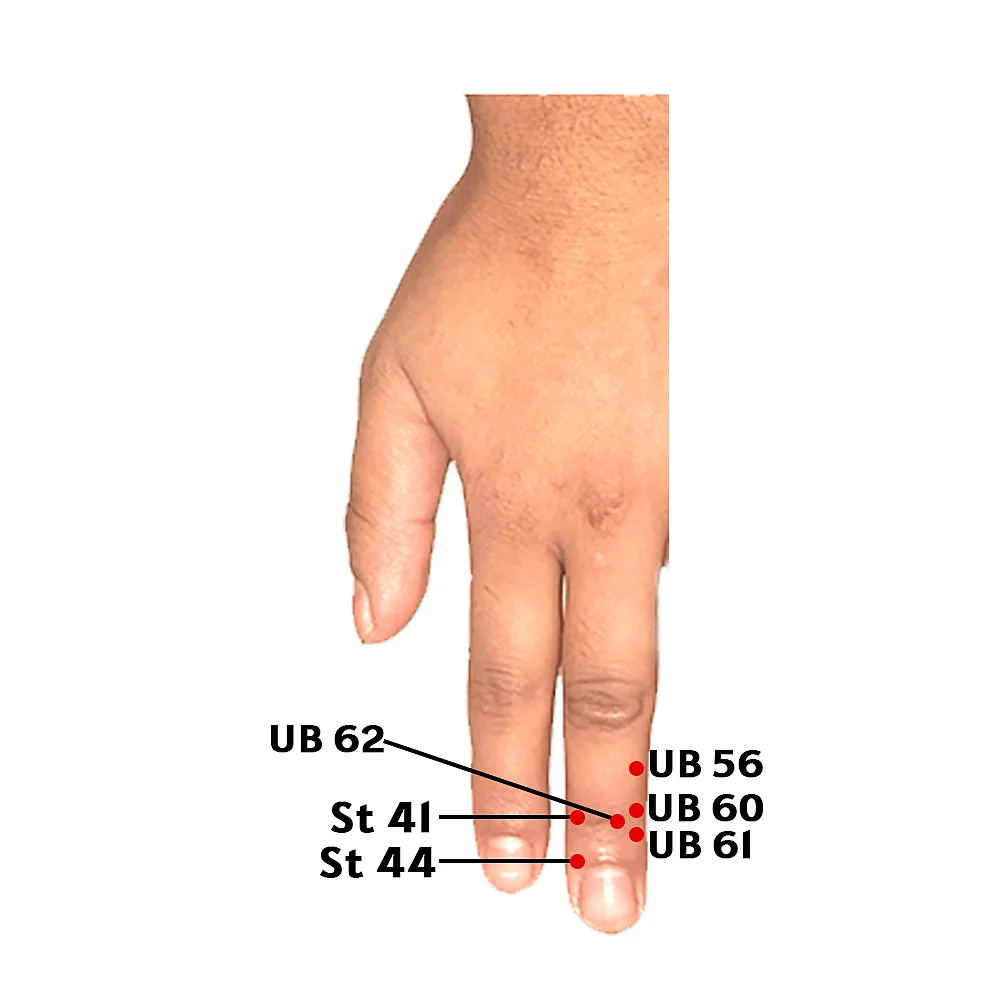
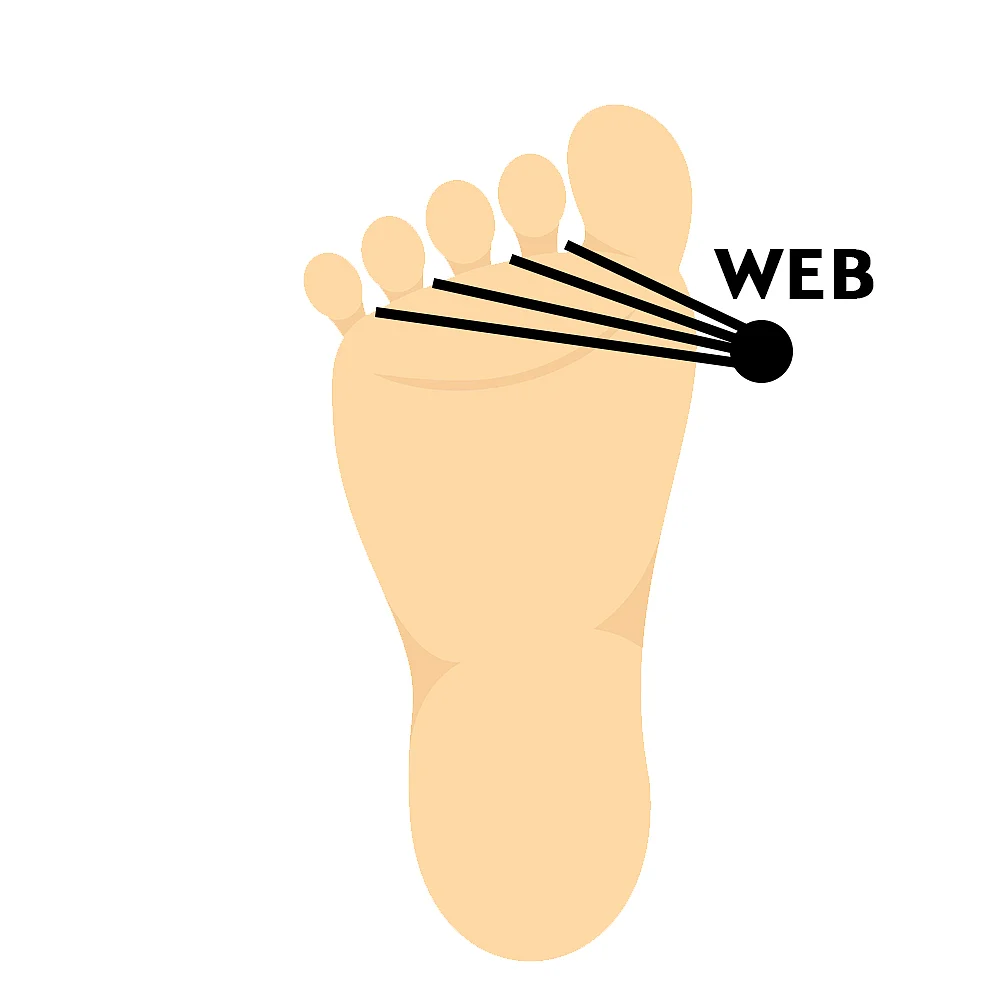
(From increasing metabolism to overcoming physical problems, Prof Luthria speaks about the art of self-healing through simple techniques. For more information on treatments and remedies, visit www.artofselfhealing.in)
